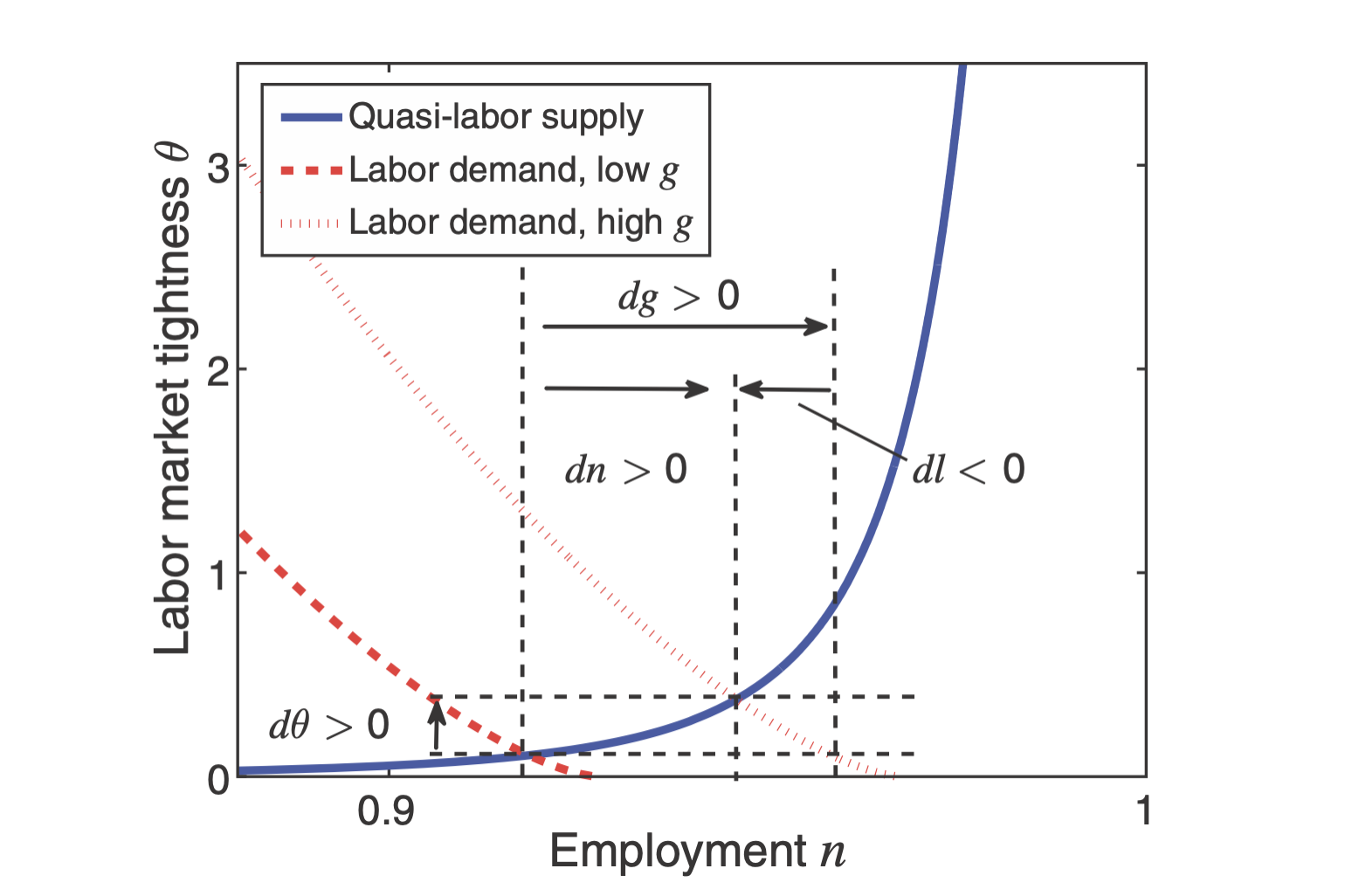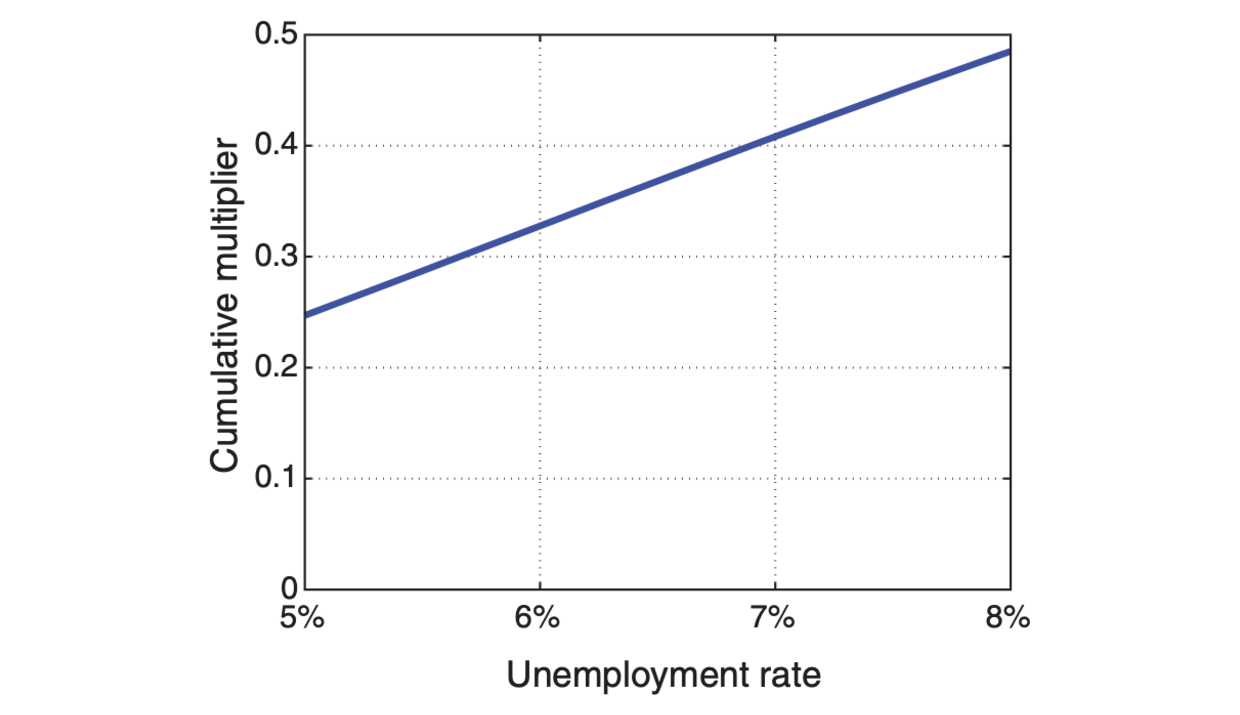Abstract
I develop a New Keynesian model in which a type of government multiplier doubles when unemployment rises from 5 percent to 8 percent. This multiplier indicates the additional number of workers employed when one worker is hired in the public sector. Graphically, in equilibrium, an upward-sloping quasi-labor supply intersects a downward-sloping labor demand in a (employment, labor market tightness) plane. Increasing public employment stimulates labor demand, which increases tightness and therefore crowds out private employment. Critically, the quasi-labor supply is convex. Hence, when labor demand is depressed and unemployment is high, the increase in tightness and resulting crowding-out are small.
Figure 1C: Low public-employment multiplier in good times

Figure 1D: High public-employment multiplier bad times

Figure 5A: Public-employment multiplier over the business cycle

Citation
Michaillat, Pascal. 2014. “A Theory of Countercyclical Government Multiplier.” American Economic Journal: Macroeconomics 6 (1): 190–217. https://doi.org/10.1257/mac.6.1.190.
@article{M14,
author = {Pascal Michaillat},
year = {2014},
title = {A Theory of Countercyclical Government Multiplier},
journal = {American Economic Journal: Macroeconomics},
volume = {6},
number = {1},
pages = {190--217},
url = {https://doi.org/10.1257/mac.6.1.190}}